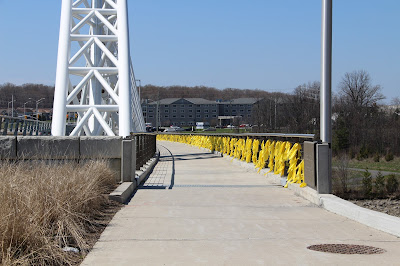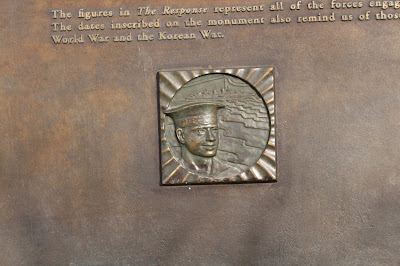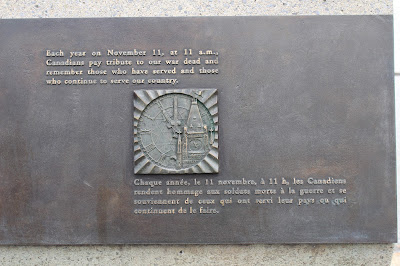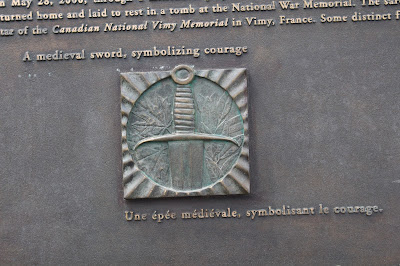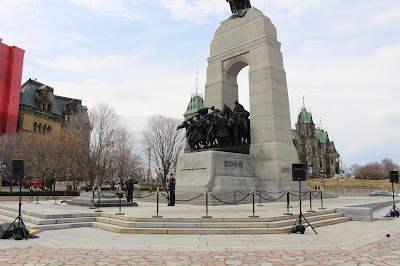There are more photographs of the bridge in an earlier post on this blog site. The bridge has since had a dedication plaque installed. This was a good opportunity to revisit the site.
 |
| Vimy Memorial Bridge Pont Commémoratif de Vimy VIMY 1917-2017 Yellow Ribbon Project - OCSB |
 |
| RIDEAU CANAL CANAL RIDEAU UNESCO WORLD HERITAGE SITE SITE DU PATRIMOINE MONDIAL DE L'UNESCO |
Vimy Memorial Bridge
Opened July 12, 2014
Vimy Memorial Bridge commemorates the 100th Anniversary of the start of the First World War in 1914 and the Battle of Vimy Ridge, a key battle of the Great War, which took place in northern France in April 1917.
Canadian Regiments from coast to coast fought together and triumphed at Vimy Ridge, helping to create a stronger sense of Canadian identity and community.
Of the 100,000 Canadians who fought valiantly at Vimy Ridge, 3,598 died and approximately 7,400 were injured.
Local branches of the Royal Canadian Legion proposed that this bridge be named to honour the many heroes of Vimy Ridge.
The Government of Canada, the Province of Ontario and the City of Ottawa provided funding for the bridge.
Pont commémoratif de Vimy
Inauguré le 12 juillet 2014
Le pont commémoratif de Vimy rappelle le 100e anniversaire du début de la Première Guerre mondiale, en 1914, ainsi que le bataille de la crête de Vimy, une des batailles les plus importantes de la Grande Guerre, qui s'ext déroulée dans le Nord de la France en avril 1917.
Des régiments de tout le Canada ont combattu et triomphé ensemble à la crête de Vimy, 3 598 sont morts et environ 7 400 ont été blessés.
Les filiales locales de la légion royale canadienne ont proposé que ce pont rende hommage aux nombreux héros de Vimy.
Le pont a été financé par les gouvernements du Canada et de l'Ontario ainsi que par la Ville d'Ottawa.
Mayor / Maire
Jim Watson
Deputy Mayor / Maire suppléant
Councillor / Conseiller
Gloucester South-Nepean / Gloucester Nepean-sud
Steve Desroches
Councillor / Conseillère
Barrhaven
Jan Harder








